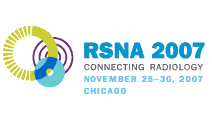
Abstract Archives of the RSNA, 2007
LL-BR2129-H10
Contribution of Breast Ultrasound in the Reduction of False Negative Mammography Rate
Scientific Posters
Presented on November 27, 2007
Presented as part of LL-BR-H: Breast Imaging
Eithne Delappe MBBCh, Presenter: Nothing to Disclose
Gamu T. Nthaba, Abstract Co-Author: Nothing to Disclose
Jennifer NiMhuircheartaigh MBBCh, Abstract Co-Author: Nothing to Disclose
Thomas Cashell, Abstract Co-Author: Nothing to Disclose
Peter A. McCarthy MD, Abstract Co-Author: Nothing to Disclose
Irene Sweeney MBBCh, Abstract Co-Author: Nothing to Disclose
A false negative mammogram results in a falsely low BIRADS category assignment. Up to 5% of women with a clinically suspicious abnormality,negative mammogram and negative ultrasound may still have breast cancer. We determine the effect of subsequent breast ultrasound in reducing the false negative mammography rate and establish the influence of histology and breast density on this rate.
We retrospectively reviewed the false negative mammography rate of 492 cases with surgically proven breast cancer referred for preoperative mammography in our institution from 2003-6. All cases categorised as BI-RADS 1-3 were classified as false negatives. From these false negatives,those in which ultrasound was also negative were further assessed regarding density and histology.
Of a total of 34 false negative mammograms(6.9%),24 had subsequent targeted ultrasound. On ultrasound 7/24 had a benign(B3) or normal finding while tumour was identified in remaining 17/24. Thus ultrasound reduced the false negative mammography rate from 34/492(6.9%) to 7/492(1.4%). Ductal and lobular carcinomas were missed on mammogram at approximately the same rate. No invasive lobular cases were missed at ultrasound. Lesion size in cases missed by both ranged from 3 to 25mm. There was a wide range in breast density in false negative cases with combined mammography and ultrasound. DCIS was the most common lesion missed on both.
We review the causes of false negative mammograms including poor technique,unusual lesion characteristics and interpretor error and illustrate cases where ultrasound contributed to reduction of false negative rates
False negative mammography rates in our institution are comparable to international rates. We demonstrate a significant reduction in false negative rates with the use of ultrasound in conjunction with mammography. Sensitivity of combined investigations approaches that of MRI(95%). While recognising that there will always be unavoidable diagnostic difficulties,we conclude that imaging of the symptomatic breast is incomplete without preoperative ultrasound.
Ultrasound reduces the false negative mammography rate and is recommended for imaging the preoperative breast
Delappe, E,
Nthaba, G,
NiMhuircheartaigh, J,
Cashell, T,
McCarthy, P,
Sweeney, I,
Contribution of Breast Ultrasound in the Reduction of False Negative Mammography Rate. Radiological Society of North America 2007 Scientific Assembly and Annual Meeting, November 25 - November 30, 2007 ,Chicago IL.
http://archive.rsna.org/2007/5007137.html

